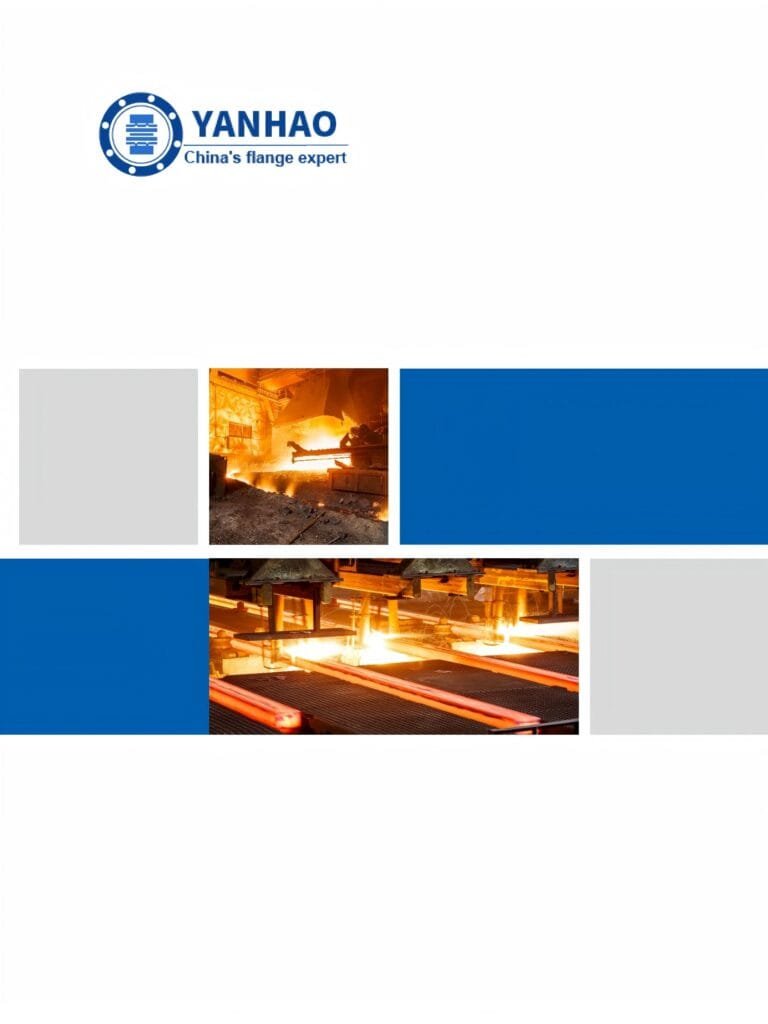What flanges are needed for high-temperature and high-pressure environments?
High-temperature and high-pressure environments require specific types of flanges and materials to ensure the safety and reliability of the systems.
The choice of flange type
When dealing with high-temperature and high-pressure environments, the selection of the appropriate flange types is crucial. Here are different types of flanges to consider and their applications in high-temperature and high-pressure environments:
- Weld Neck Flanges: These flanges are commonly used in high-temperature and high-pressure environments. Their significant advantage lies in their ability to mitigate welding stress and provide better performance under high-temperature and high-pressure conditions. The neck of weld neck flanges is designed for welding to high-temperature pipelines or vessels, offering a more stable connection. They are often employed in industries such as petroleum, petrochemicals, chemical engineering, and high-temperature and high-pressure steam systems.
- Blind Flanges: Blind flanges are suitable for situations where there is a need to close off the end of a pipeline or vessel, especially when temporary closure or isolation of specific sections of a system is necessary. The sealing performance of blind flanges is critical, especially in high-temperature and high-pressure environments, to ensure the safety and integrity of the system. Blind flanges are commonly used for purposes such as pipeline isolation, equipment maintenance, and system testing.
- Flange Gaskets: In high-temperature and high-pressure environments, selecting the appropriate flange gaskets is of paramount importance. These gaskets are used for flange connections to ensure sealing and temperature tolerance. They can be made of materials such as metallic gaskets, non-metallic gaskets, or composite gaskets, with the specific choice depending on the working conditions and fluid properties. Flange gaskets find application in industries like petroleum, natural gas, chemical engineering, and high-temperature and high-pressure steam systems.
In high-temperature and high-pressure environments, choosing the right type of flanges and gaskets is a critical factor in ensuring the system’s operation. These choices contribute to enhanced safety, reliability, and reduced maintenance costs. Incorrect choices may lead to leaks, accidents, and unnecessary repair work. Therefore, careful consideration of flange and gasket selection is essential in high-temperature and high-pressure environments.
The selection of flange materials and grades
In high-temperature and high-pressure environments, there are specific requirements for material and flange grade selection:
Material Selection Requirements:
- High-temperature and high-pressure environments typically require the use of materials that can withstand both high temperatures and high pressures to ensure the performance and durability of flanges and related components.
- Common materials for high-temperature and high-pressure applications include stainless steel, chrome-moly steel, nickel alloys, and titanium alloys. These materials exhibit excellent resistance to high-temperature corrosion and high-temperature strength.
- Material selection should also consider the chemical nature and corrosiveness of the working fluid to prevent corrosion or damage to the system.
Flange Grade Selection Requirements:
- Flange grades are chosen based on the specific working pressure, with different grades suitable for different high-temperature and high-pressure conditions.
- Common flange grades include 600 lb (600#), 900 lb (900#), 1500 lb (1500#), and 2500 lb (2500#). These grades correspond to different ranges of working pressures.
- Selecting the correct flange grade is crucial because an incorrect grade selection can lead to flanges and flange connections not being compatible with the system’s working pressure, potentially causing leaks and safety risks.
In high-temperature and high-pressure environments, the proper selection of materials and flange grades is essential to ensure the safety, performance, and reliability of the system. This is a necessary step to reduce potential risks, extend the system’s lifespan, and minimize maintenance and repair costs.
The importance of choosing the right flanges
The importance of choosing the right flanges in high-temperature and high-pressure environments can be summarized as follows:
- Safety: In high-temperature and high-pressure conditions, the safety of the system is of paramount concern. Incorrectly chosen flanges can lead to leaks, explosions, or system failures, posing a significant threat to operators and the environment.
- Reliability: Properly selected flange types, materials, and grades help ensure the reliable operation of the system in extreme conditions. This reduces the need for maintenance and repairs, minimizing downtime.
- Performance: High-temperature and high-pressure flange types and materials maintain their performance, remaining undamaged by changes in temperature and pressure. This contributes to the stability of the system.
- Leak Prevention: In high-temperature and high-pressure environments, leaks can lead to fires, chemical spills, or other hazardous events. Correctly chosen flanges and sealing materials effectively prevent leaks.
- Reduced Maintenance Costs: Incorrect flange selection may result in frequent maintenance and repairs, significantly increasing costs. Proper choices can extend the system’s lifespan and reduce maintenance expenses.
In summary, in high-temperature and high-pressure environments, selecting the appropriate flange types, materials, and grades is crucial. This helps ensure the safety and reliability of the system while reducing maintenance costs and repair work, ultimately ensuring that the system can operate safely and stably under extreme conditions.
Author: Lewis Liu
Hello, my name is Lewis Liu, and I’m a professional sales engineer with over a decade of expertise in the flange fittings sector.
I am quite informed about flange selection, installation, and maintenance. I am passionate about providing customers with the greatest solutions for keeping their pipeline systems running smoothly, safely, and dependably.
If you have any queries or concerns concerning flange fittings for your pipelines, whether they are about selection, material choice, specification requirements, or anything else, please contact me at any time. I am dedicated to providing expert advice and assistance to help you make educated decisions and reach your objectives.

